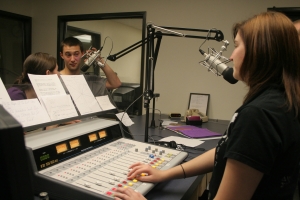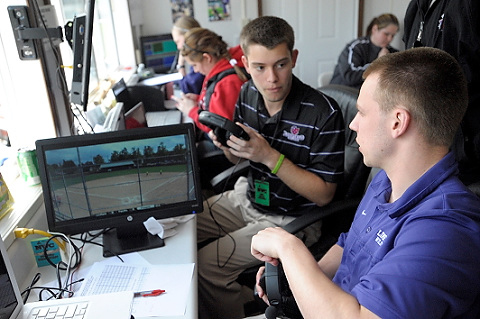July 24, 2014
Spotlight: Linfield College’s KSLC
Last Updated on July 24, 2014 by askcbiorg

Special thanks to Station Adviser Michael Huntsberger, Ph.D., Jerry Young, 2013-2014 Station Manager, and Jeremy Odden, current Technical Director for answering the questions.
Tell me a little history about your station and where your station is now?
KSLC is a noncommercial educational broadcast radio station licensed by the Federal Communications Commission to the Board of Trustees and the President of Linfield College. KSLC broadcasts at 750 watts in analog FM and HD, and streams online at http://kslconline.linfield.edu:8000/kslc.mp3. The studios are located in the basement of Renshaw Hall on the Linfield campus. The antenna and transmitter are located 4.5 miles to the southwest in the foothills of the Coast Range. KSLC is programmed, operated, and managed entirely by students, as an activity of the Associated Students of Linfield College.
 KSLC began broadcasting in the early 1970s as a Class D 10 watt station. When the FCC eliminated Class D stations, KSLC raised its power to 100 watts in 1981. The station originally broadcast from Pioneer Hall. In 2007, KSLC moved the antenna to a new tower on the Linfield campus, raised power to 250 watts, and moved into the current studios in Renshaw Hall, where the station is collocated with the Department of Mass Communication and other student media organizations. In 2011, KSLC moved the transmitter and antenna to the current off campus site, raised power to 750 watts, and began broadcasting in HD.
KSLC began broadcasting in the early 1970s as a Class D 10 watt station. When the FCC eliminated Class D stations, KSLC raised its power to 100 watts in 1981. The station originally broadcast from Pioneer Hall. In 2007, KSLC moved the antenna to a new tower on the Linfield campus, raised power to 250 watts, and moved into the current studios in Renshaw Hall, where the station is collocated with the Department of Mass Communication and other student media organizations. In 2011, KSLC moved the transmitter and antenna to the current off campus site, raised power to 750 watts, and began broadcasting in HD.
What sets your station apart from other college radio stations?
KSLC is a unique reflection of the culture of Linfield College. The station primarily broadcasts a freeform music format. For the most part, student deejays program music of their choice. The station prioritizes music by local artists, and locally produced cuts can be heard at the top of every hour. The station is managed by a staff of nine students, who receive small monthly stipends from the ASLC.
Linfield College has a national reputation for its success in NCAA Division 3 sports, and KSLC broadcasts the home games for Linfield football, basketball, baseball, volleyball, and soccer. All of the sportscasters on KSLC are students. KSLC also maintains an active schedule of news and public affairs programs that focus on issues and concerns of students and the local community.
Any student can be involved at KSLC, though most become involved by enrolling in the 1 credit Electronic Media Practices course offered every term by the Mass Communication Department. The course covers radio programming and production techniques, as well as legal, regulatory, and operational concerns and practices.
Why did you choose to work at the radio station?
 Jerry Young, Station Manager, 2013-14: I originally got involved in college radio at KSLC because of sports broadcasting. I wanted to get involved in doing play-by-play for whatever sports were available. As I started to work with the sports broadcasting team, I slowly became more and more involved in the operations of the radio station. It was something that I really enjoyed doing so I became involved as a staff member.
Jerry Young, Station Manager, 2013-14: I originally got involved in college radio at KSLC because of sports broadcasting. I wanted to get involved in doing play-by-play for whatever sports were available. As I started to work with the sports broadcasting team, I slowly became more and more involved in the operations of the radio station. It was something that I really enjoyed doing so I became involved as a staff member.
Jeremy Odden, current Technical Director: It was something I was interested in, and something I knew I could do well.
What’s the craziest thing you’ve ever done for your station?
Jerry: The craziest thing I have ever done for the station was in my freshmen year. Some of the guys I broadcast with, who were seniors, asked me to come on their sports talk show with them. It turned out that only one of them could make it, so I ended up helping host the show. It was a great experience but I was nervous the whole time.
Jeremy: Take on the unofficial title of ‘Facilities Manager’ and fill a dumpster with the contents of our back rooms.
What’s the best part of college radio? And the hardest part?
Jerry: I would say the best part of college radio is that everything is student run. Students manage the station, play the music, run all of the equipment, and do pretty much everything else that goes into running the station. I would also say that this is the hardest part. Since we are all balancing schoolwork with what we do at the radio station, I feel like a lot of the things we want to get done don’t happen when we want them to. But it is what makes college radio the great thing that it is.
Jeremy: The best and worst part is that we can use it as a learning experience. It doesn’t really matter if we mess up, but we do it a lot because we’re still learning.




 KSLC began broadcasting in the early 1970s as a Class D 10 watt station. When the FCC eliminated Class D stations, KSLC raised its power to 100 watts in 1981. The station originally broadcast from Pioneer Hall. In 2007, KSLC moved the antenna to a new tower on the Linfield campus, raised power to 250 watts, and moved into the current studios in Renshaw Hall, where the station is collocated with the Department of Mass Communication and other student media organizations. In 2011, KSLC moved the transmitter and antenna to the current off campus site, raised power to 750 watts, and began broadcasting in HD.
KSLC began broadcasting in the early 1970s as a Class D 10 watt station. When the FCC eliminated Class D stations, KSLC raised its power to 100 watts in 1981. The station originally broadcast from Pioneer Hall. In 2007, KSLC moved the antenna to a new tower on the Linfield campus, raised power to 250 watts, and moved into the current studios in Renshaw Hall, where the station is collocated with the Department of Mass Communication and other student media organizations. In 2011, KSLC moved the transmitter and antenna to the current off campus site, raised power to 750 watts, and began broadcasting in HD.
